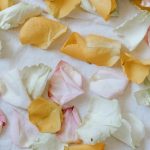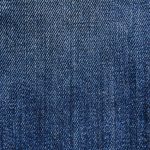Are you curious about faux linen fabric? Well, you’re in luck!
In this article, we’ll explore the properties, manufacturing process, and advantages of this versatile material.
We’ll also discuss the key differences between faux linen and real linen fabric.
Whether you’re a fashion enthusiast or a home decorator, understanding the common applications of faux linen fabric will surely pique your interest.
So, let’s dive in and discover what makes faux linen fabric so special!
Table of Contents
Properties of Faux Linen Fabric
Faux linen fabric is known for its durability and wrinkle-resistance, making it a popular choice for home decor and upholstery. This fabric is designed to mimic the look and feel of real linen without the high maintenance that comes with it.
The durability of faux linen fabric means that it can withstand everyday wear and tear, making it an excellent choice for furniture upholstery that will be used frequently. It is also resistant to fading, ensuring that your home decor will maintain its vibrant colors for years to come.
When it comes to caring for faux linen fabric, it is relatively low-maintenance. Most faux linen fabrics can be machine washed on a gentle cycle with cold water. It is important to avoid using bleach or harsh detergents, as they can damage the fabric. After washing, it is recommended to hang or lay flat to dry to prevent any shrinkage or distortion of the fabric.
In terms of ironing, faux linen fabric is relatively wrinkle-resistant, but if you do notice any wrinkles, you can use a low to medium heat setting to remove them. Overall, faux linen fabric offers both durability and easy care, making it an excellent choice for any home decor or upholstery project.
Manufacturing Process of Faux Linen Fabric
When manufacturing this type of material, you’ll be amazed at how the fibers are blended and woven together to create a linen-like texture. Synthetic linen alternatives have gained popularity due to their eco-friendly production methods.
Here’s how they are made:
-
Blending: Synthetic fibers like polyester, rayon, or nylon are blended together to create a fabric that closely resembles linen.
-
Spinning: The blended fibers are spun into yarns, which are then ready to be woven.
-
Weaving: The yarns are woven together using a variety of weaving techniques, such as plain weave or twill weave, to create the characteristic linen-like texture.
-
Finishing: After weaving, the fabric undergoes a finishing process, which may involve treatments like dyeing, printing, or adding a softener for a smoother feel.
The manufacturing process of faux linen fabric ensures that it is a sustainable alternative to traditional linen. By using synthetic fibers, it reduces the impact on natural resources and avoids the use of harmful chemicals. Additionally, the production methods are designed to minimize waste and energy consumption.
Advantages of Faux Linen Fabric
One of the advantages of using synthetic linen alternatives is that they are more durable than traditional materials. Faux linen fabric offers exceptional durability and longevity compared to natural linen. This makes it an excellent choice for various applications, including clothing, upholstery, and home decor.
The durability of faux linen fabric can be attributed to its synthetic composition. Unlike natural linen, which is made from flax fibers, faux linen is typically made from polyester or a blend of polyester and other fibers. These synthetic materials are known for their strength and resistance to wear and tear. They can withstand frequent use and maintain their appearance and quality over time.
Another advantage of faux linen fabric is its ease of care and maintenance. Synthetic materials are often more resistant to stains, wrinkles, and fading compared to natural fibers. Faux linen fabric can be easily cleaned with regular machine washing or spot cleaning, and it does not require ironing or special treatment. This makes it a convenient option for busy individuals who want a fabric that is both durable and low maintenance.
In summary, faux linen fabric offers the durability and longevity that surpasses traditional linen. Its synthetic composition provides strength and resistance to wear and tear, making it suitable for various applications. Additionally, its easy care and maintenance requirements make it a practical choice for those looking for a fabric that is both durable and hassle-free.
| Advantages of Faux Linen Fabric |
|---|
| Durability and Longevity |
| Ease of Care and Maintenance |
Differences Between Faux Linen and Real Linen Fabric
You can distinguish between the two types of fabric by examining their composition and texture. Faux linen fabric, also known as imitation or synthetic linen, is a popular alternative to real linen fabric. Here are some key differences between the two:
- Composition: Faux linen fabric is typically made from a blend of synthetic fibers like polyester, nylon, or rayon, while real linen fabric is made from natural flax fibers.
- Texture: Real linen fabric has a unique texture with a slightly rough feel, while faux linen fabric often has a smoother and softer texture.
Now, let’s talk about the pros and cons of using faux linen fabric:
Pros:
- Affordability: Faux linen fabric is usually more affordable than real linen, making it a budget-friendly option.
- Durability: Faux linen fabric tends to be more durable and resistant to wrinkles and shrinkage compared to real linen.
- Variety: Faux linen fabric comes in a wide range of colors and patterns, allowing for more design options.
- Easy Care: Faux linen fabric is generally easier to care for and requires less maintenance than real linen.
To care for faux linen fabric, follow these tips:
- Machine wash in cold water on a gentle cycle.
- Use a mild detergent and avoid bleach.
- Dry on low heat or hang to air dry.
- Iron on low heat if necessary, or use a fabric steamer to remove wrinkles.
Common Applications of Faux Linen Fabric
Faux linen fabric is commonly used in home decor and upholstery due to its affordability and durability. It is a popular choice for curtains, drapes, and pillow covers, thanks to its natural-looking texture and soft drape. Faux linen fabric is also resistant to fading, making it ideal for areas with direct sunlight.
In addition to its uses in home decor, faux linen fabric offers several benefits in clothing. It is lightweight and breathable, perfect for summer garments like dresses, shirts, and skirts. Its moisture-wicking properties help keep you cool and comfortable throughout the day. Faux linen fabric also has a natural wrinkle resistance, meaning you can enjoy a casual, relaxed look without the need for constant ironing. Furthermore, it is easy to care for and can be machine washed, making it a practical choice for everyday wear.
Overall, faux linen fabric is a versatile and affordable option for both home decor and clothing. Its durability, affordability, and natural-looking texture make it a popular choice among consumers.
Conclusion
In conclusion, faux linen fabric is a versatile and cost-effective alternative to real linen fabric. With its similar appearance and texture, it is often difficult to distinguish between the two.
Faux linen fabric offers a range of advantages such as easy maintenance, durability, and affordability. It is widely used in various applications including upholstery, drapery, and clothing.
Whether you’re looking for a budget-friendly option or a fabric that is resistant to wrinkles and shrinkage, faux linen fabric is a great choice.
- Tetron Fabric in Delhi: Where to Find It - June 17, 2025
- Tetron Fabric Vs Other Fabrics: a Comparative Analysis - June 17, 2025
- Creative Uses for Tetron Fabric in Fashion and Home Decor - June 17, 2025






